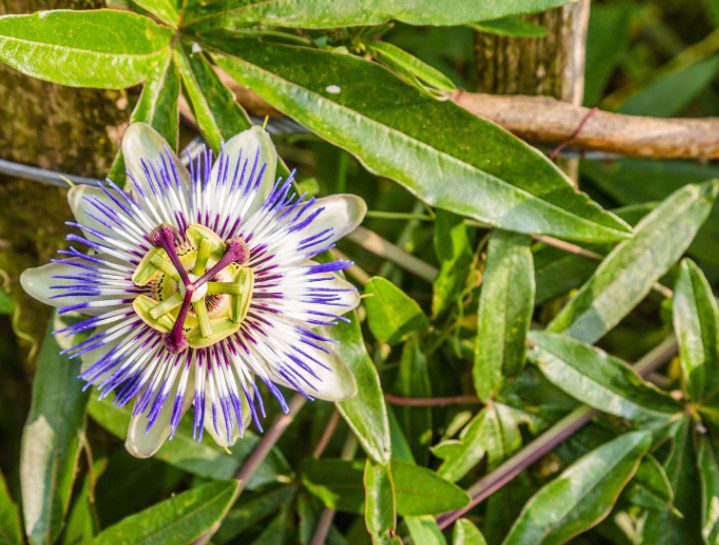Purple Passion Plant
Purple passion plants (Gynura Aurantiaca) are unique and beautiful houseplants that can be grown indoors. This young purple passion plant is a perfect choice for hanging in a basket.
It has velvety leaves, thick purple hairs, and a green leaf with a cascading habit. The purple passion houseplants are a classic indoor decoration. They can also be found in the wild in southern regions.
How to Grow Purple Passion Flowers
The purple passion plant is also called the velvet plant or Gynura. It has thick hairs that give it purple leaves. The plant’s hairs become more dispersed, and the color becomes less intense as it ages.
Purple passion houseplants can be attractive for up to three years. The purple passion plant should be planted in well-draining soil as it is more susceptible to root rot. For easy rooting, use a mixture of perlite and vermiculite when rooting cuttings.
Cover the cuttings with a perlite or vermiculite mixture when they are being rooted. Then, take them off at night.
Purple Passion Plant Care Place
Purple passion plants in bright to moderate lighting, but avoid direct sunlight. The purple color of purple passion plants is intensified by a brighter light.
Purple passion houseplants like cool temperatures. The ideal temperature for purple passion plants is 60 to 70°F (16-21 C). The soil should be kept moist, but the roots shouldn’t stand on soggy soil.

Avoid wetting the leaves as hairy leaves can trap water and cause them to rot. As part of velvet plant care, fertilize every two weeks from spring to fall.
Winter: Fertilize every other month. Purple passion plants can be grown outside as an annual.
However, it is best to keep them contained, so they don’t spread too much. Although purple passion houseplants can produce orange flowers, the odor they emit is not pleasant.
To avoid the unpleasant smelly blooms, many gardeners cut the buds. If you don’t have any, flowers are a sign that the plant is mature.
As the plant matures, the older leaves lose their beautiful purple coat and look tired after a year. It is good to take cuttings of the plant in late winter to keep the plant compact, bushy, and in high color.
There is nothing worse than seeing one long vine coming off the plant and being wrapped around a room. Its form is much more pleasing as a small, trailing bush than one struggling long vine.
The purple passion vine grows well in rich, moist soil with a ratio of 2:1:1 peat moss, loam, and sand. It likes being well-drained but on the moist side, as drying out repeatedly will produce flaccid leaves with brown crispy edges.
There is always an abundance of the little dollar cuttings, but finding a large plant seems somewhat of a challenge. I recommend that the cuttings are taken in winter be rooted and made into that large plant you are looking for.
The plants are easy to root and will take no time at all. Cutting them and placing them into a bed of warm moist sand will keep them healthy, and rooting will take place.
In about six weeks, the rooted cuttings can be transplanted into the soil ratio mentioned above. Any further cuttings can be added to the same pot to continue filling out the plant.
The plant’s color is a lovely accent among other houseplants and an interesting contrast to the standard green. Its leaves have a shape all their own, like holly, and are distinct in any decor.
Purple Passion Plant Information
Scientific name: Gynura aurantiaca.
Growth habit: A sprawling evergreen vine growing to 1 foot tall and over 5 feet wide. Plants produce large, coarsely serrated green leaves with velvety purple hairs.
Light: Keep in bright light but out of the direct sun for the best leaf color. Outdoors grow in the filtered sun of a tree or shaded patio.
Water requirements: Prefers moist soil; water when the surface starts to dry.
Feedings: Apply a 20-20-20 or similar fertilizer each month to container plantings from March through November, every other month during winter.
Propagation: From cuttings.
Ease of culture: Easy.
Hardiness: Tender; move plants to a warm location when temperatures below 50 degrees are expected.
Major problems: Purple passion vines are a favorite food of mealybugs. The white scalelike insects hide among the purple hairs and on the undersides of leaves until large populations develop.
Control with soap or synthetic pyrethroid spray. Also, provide good drainage to prevent root rot.
Pruning: Plants can be rampant growers that need periodic trimming to continue compact growth. Trim the ends of new shoots when 6 to 8 inches long to keep the plants in bounds.
Many gardeners also remove the attractive but pungent orange flowers as they develop.
Use: Purple passion vines are best displayed for their attractive foliage. Keep individual plants in decorative pots to set on tables or display them in hanging baskets or planters.
Use the plants indoors, on shaded patios, or hung from trees in rest areas throughout the landscape.
Plants also may be added to atriums as a ground cover.
Florida native: No; native to Java.


























